Scientists are following two huge icebergs on an epic journey
- Published
- comments
WATCH: Flying over iceberg A81 in a small plane
Two enormous icebergs are being carefully monitored after they were spotted drifting out to sea from the coast of Antarctica.
The two huge blocks of ice, one of which is the size of Greater London (named A81) and the other which is the size of the county of Cornwall (A76a), are being tracked by British scientists who are worried the path of the icebergs may have an impact on wildlife.
The icebergs could take decades to melt away, but when they do, the huge amount of fresh water that enters the ocean may make it hard for some small animal and plant life to survive.
However, this is not always the case.
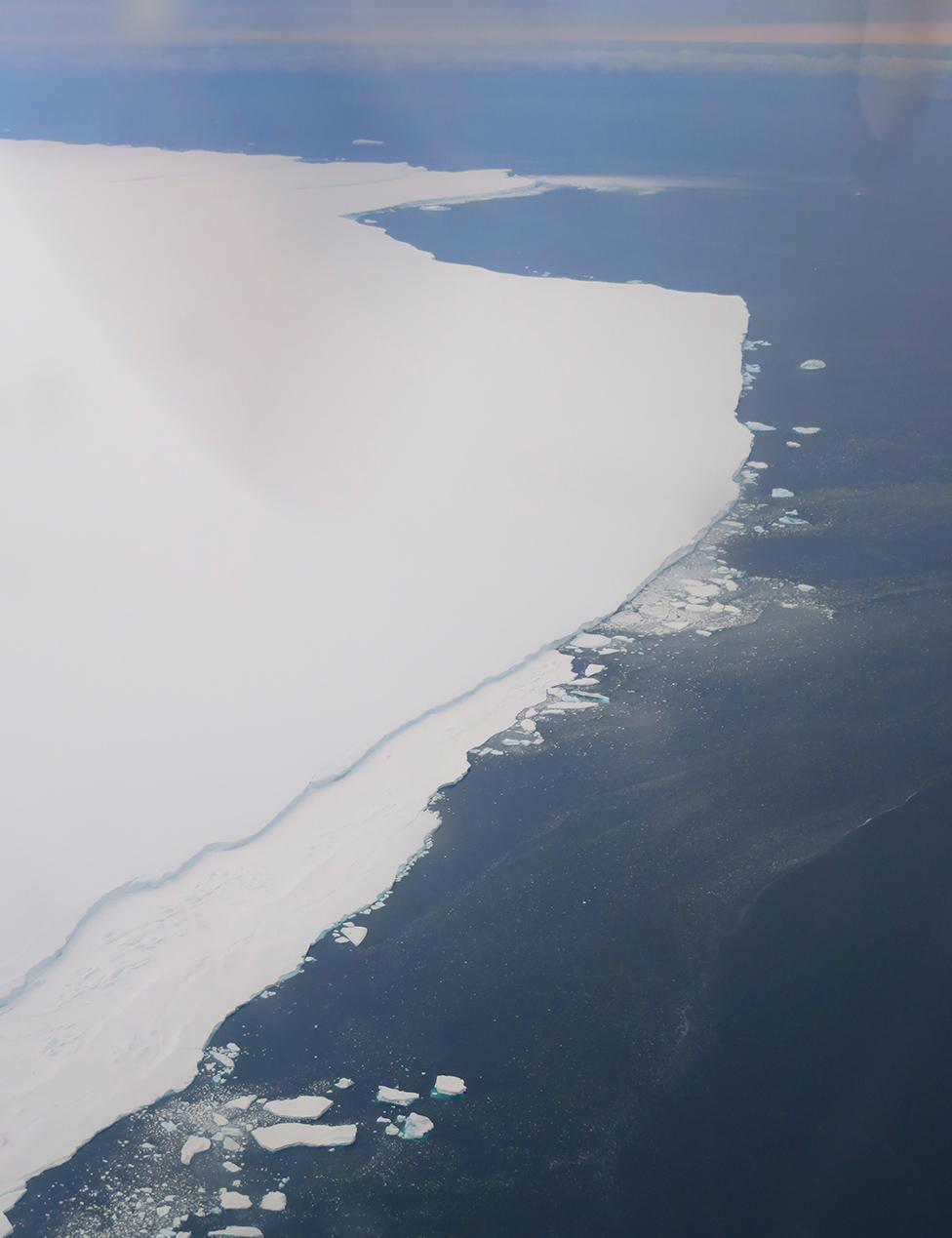
Iceberg A81 is as big as Greater London
When the ice melts, ancient minerals that have been 'trapped' in the ice will be released back into the sea.
This dust is a source of nutrients that may help life in the ocean.
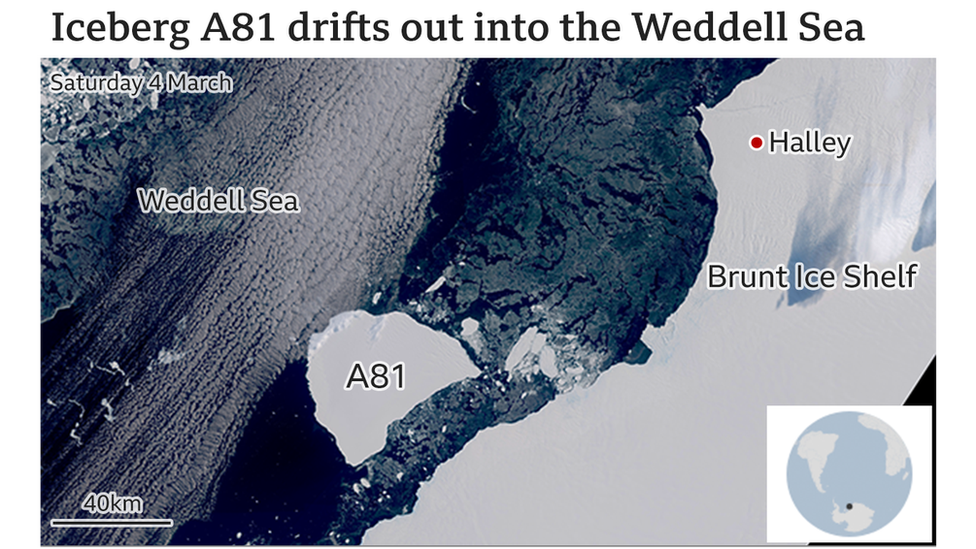
Professor Geraint Tarling, who has been conducting research in the Antarctic, was heading home on board Royal Research Ship Discovery when the team sailed very close to the larger of the two icebergs (A76a) as it drifted out of Antarctica's Weddell Sea into the South Atlantic.
They took the opportunity to try and learn more about it by collecting samples from around the berg using special non-contaminated pipes under the ship.
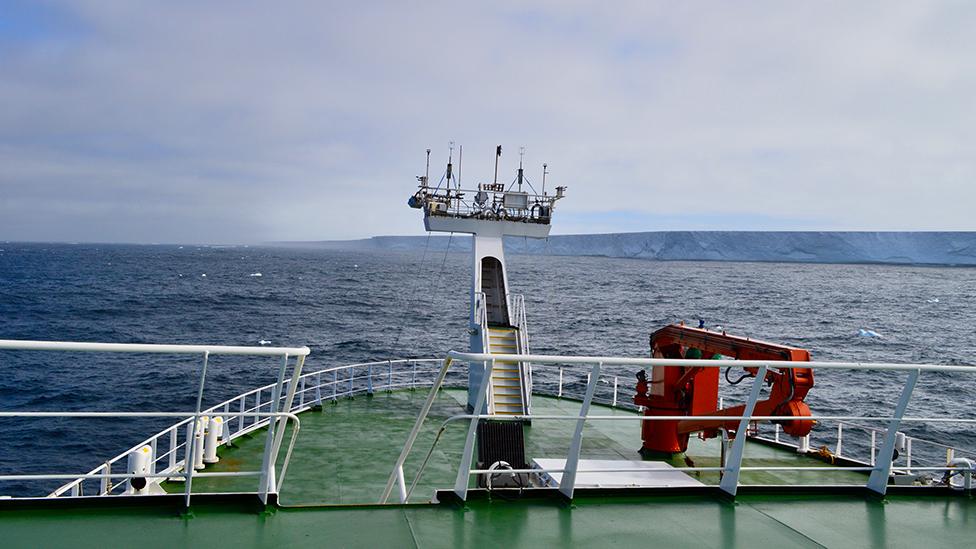
A76a: RRS Discovery encountered the iceberg on its way home
The long, 'ironing board' shaped iceberg named A76a originally broke away from the Filchner-Ronne Ice Shelf in May 2021.
It has drifted north carried by currents and winds towards the gap between the British overseas territories of the Falklands and South Georgia Islands.
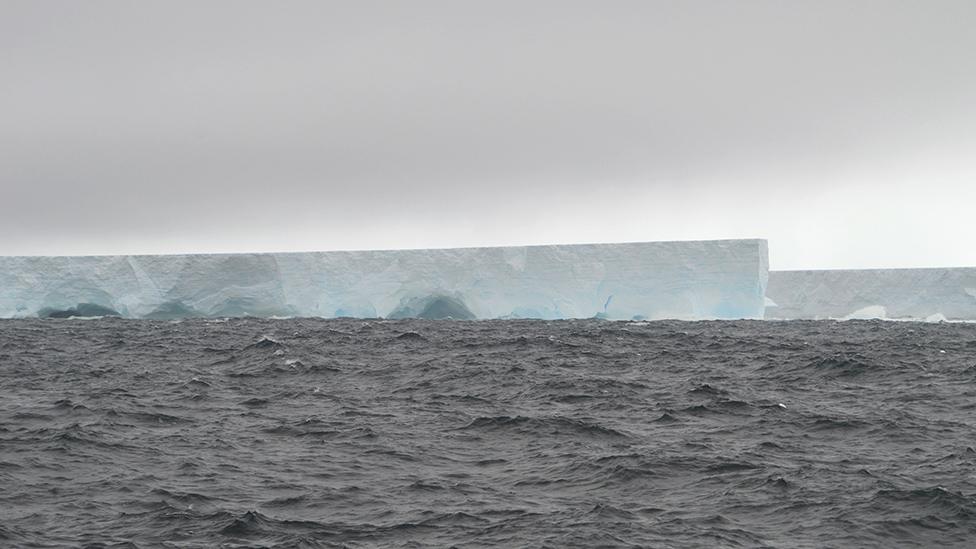
A76a: The ice extends to great depth below the waterline
Scientists are worried it could either get stuck in the shallow waters near South Georgia, or possibly at the series of nearby tiny islands known as Shag Rocks.
Both locations might become a problem for local wildlife and people as it could impact fishing.
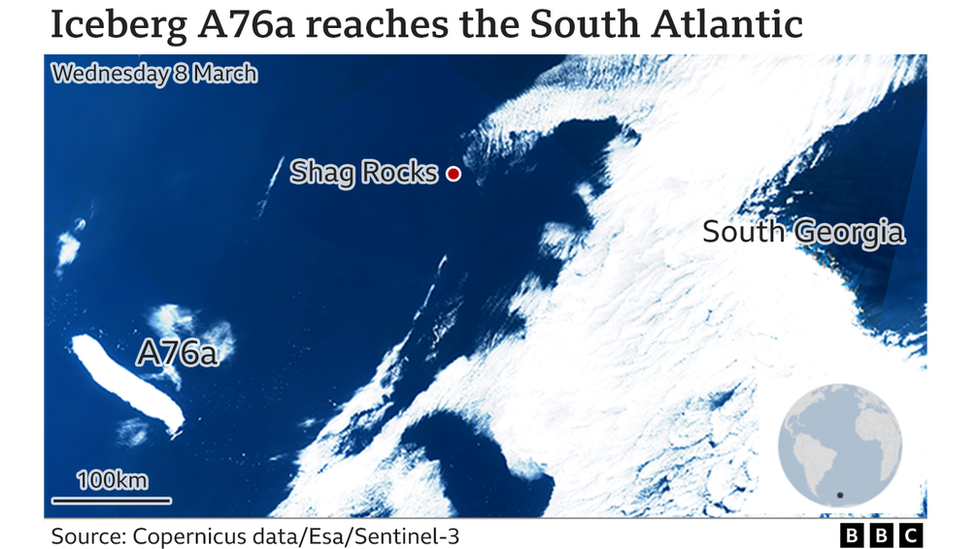
- Published12 March 2023

- Published12 March 2023

